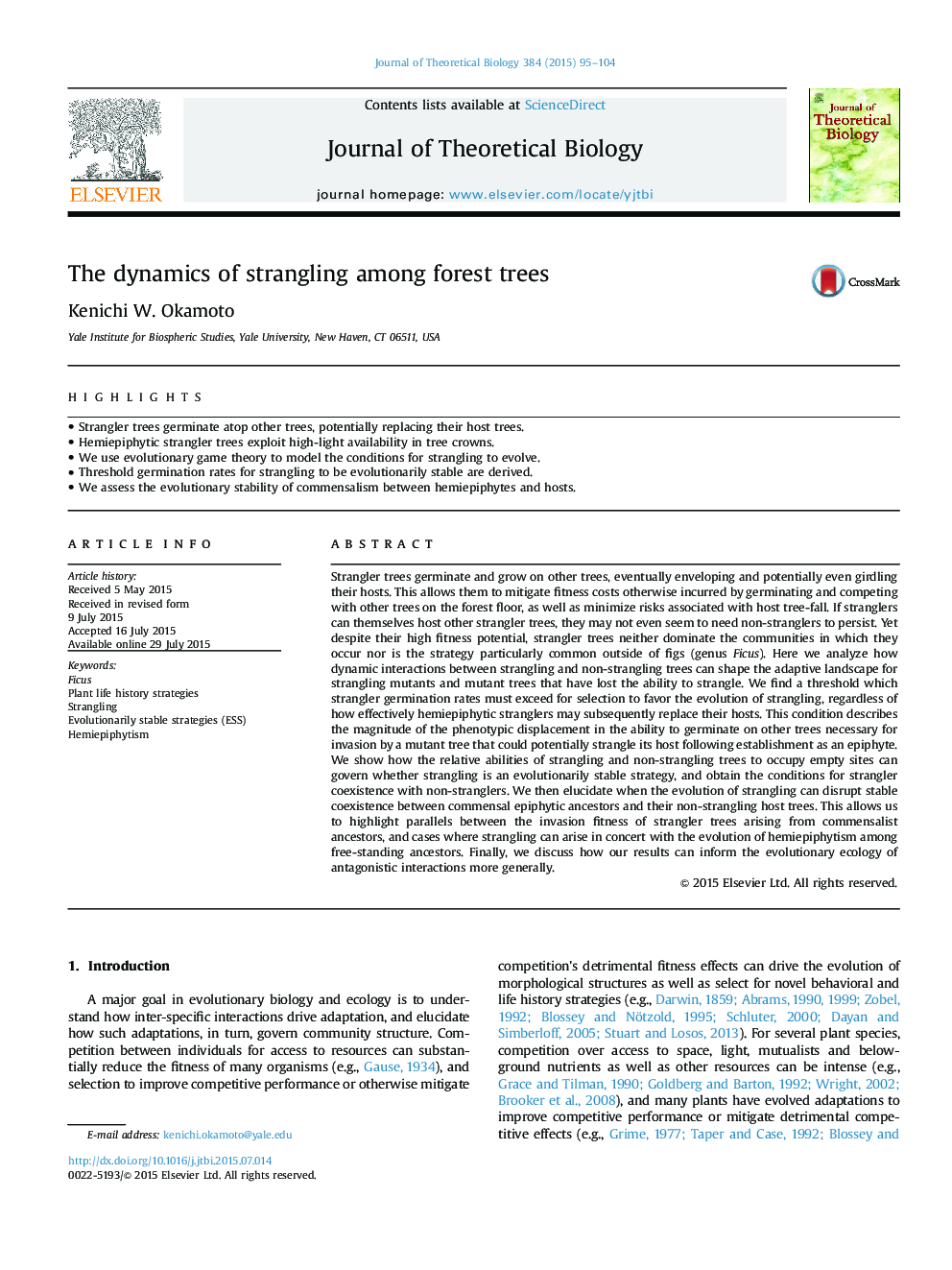| کد مقاله | کد نشریه | سال انتشار | مقاله انگلیسی | نسخه تمام متن |
|---|---|---|---|---|
| 4495983 | 1623826 | 2015 | 10 صفحه PDF | دانلود رایگان |
• Strangler trees germinate atop other trees, potentially replacing their host trees.
• Hemiepiphytic strangler trees exploit high-light availability in tree crowns.
• We use evolutionary game theory to model the conditions for strangling to evolve.
• Threshold germination rates for strangling to be evolutionarily stable are derived.
• We assess the evolutionary stability of commensalism between hemiepiphytes and hosts.
Strangler trees germinate and grow on other trees, eventually enveloping and potentially even girdling their hosts. This allows them to mitigate fitness costs otherwise incurred by germinating and competing with other trees on the forest floor, as well as minimize risks associated with host tree-fall. If stranglers can themselves host other strangler trees, they may not even seem to need non-stranglers to persist. Yet despite their high fitness potential, strangler trees neither dominate the communities in which they occur nor is the strategy particularly common outside of figs (genus Ficus). Here we analyze how dynamic interactions between strangling and non-strangling trees can shape the adaptive landscape for strangling mutants and mutant trees that have lost the ability to strangle. We find a threshold which strangler germination rates must exceed for selection to favor the evolution of strangling, regardless of how effectively hemiepiphytic stranglers may subsequently replace their hosts. This condition describes the magnitude of the phenotypic displacement in the ability to germinate on other trees necessary for invasion by a mutant tree that could potentially strangle its host following establishment as an epiphyte. We show how the relative abilities of strangling and non-strangling trees to occupy empty sites can govern whether strangling is an evolutionarily stable strategy, and obtain the conditions for strangler coexistence with non-stranglers. We then elucidate when the evolution of strangling can disrupt stable coexistence between commensal epiphytic ancestors and their non-strangling host trees. This allows us to highlight parallels between the invasion fitness of strangler trees arising from commensalist ancestors, and cases where strangling can arise in concert with the evolution of hemiepiphytism among free-standing ancestors. Finally, we discuss how our results can inform the evolutionary ecology of antagonistic interactions more generally.
Journal: Journal of Theoretical Biology - Volume 384, 7 November 2015, Pages 95–104
